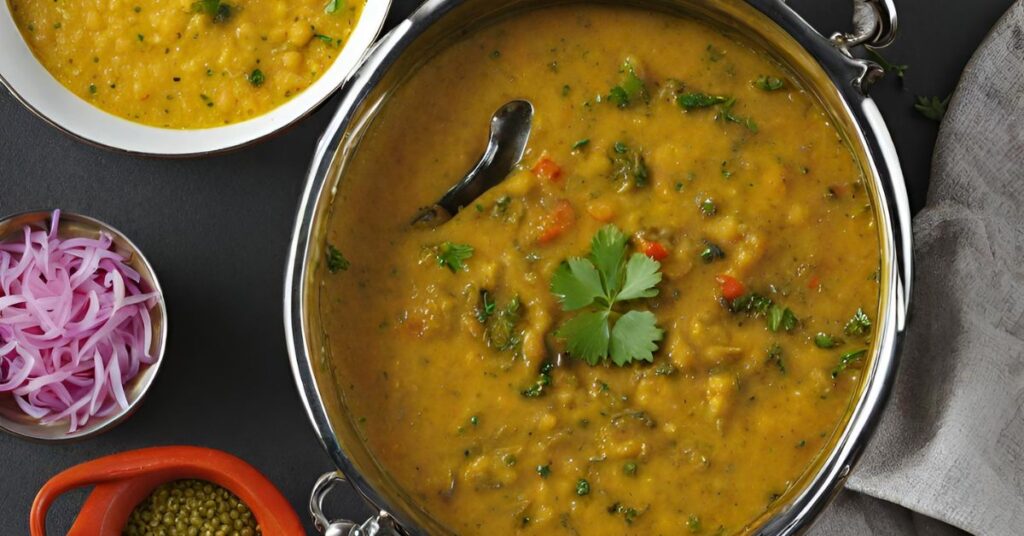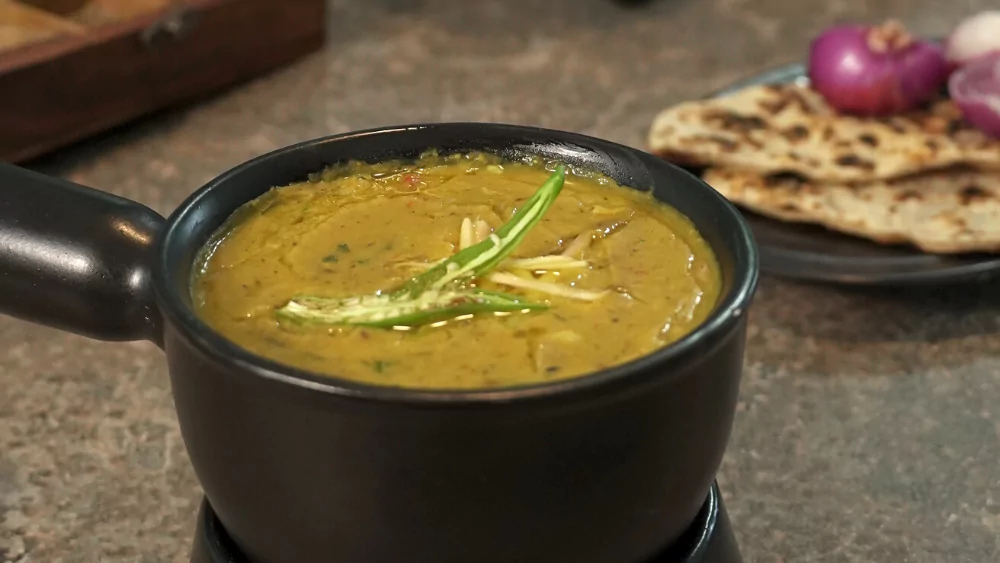If you’re a fan of Indian cuisine, you’ve likely been tantalized by the rich aroma and bold flavors of Dal Tadka.
This classic dish, also known as Indian Lentil Curry, is a staple in households across the country.
Bursting with the goodness of lentils, aromatic spices, and tempered with fragrant ghee, Dal Tadka is not just a meal; it’s a flavorful journey that takes your taste buds on an adventure.

What Makes Dal Tadka Special?
Dal Tadka holds a special place in Indian cuisine for several reasons. Firstly, it’s incredibly versatile.
Whether you’re a vegetarian looking for a hearty protein-rich meal or a meat-lover seeking a satisfying dish, Dal Tadka fits the bill.
Secondly, it’s easy to prepare, making it a go-to option for busy weeknights or lazy weekends.
And finally, its explosion of flavors—from earthy lentils to the warmth of spices—makes every bite a culinary delight.
Ingredients You’ll Need
Before embarking on this flavorful journey, gather the following ingredients:
Split Red Lentils (Masoor Dal): 1 cup
Yellow Lentils (Toor Dal): 1/2 cup
Water: 3 cups
Tomatoes: 2 medium-sized, finely chopped
Onion: 1 large, finely chopped
Garlic: 4 cloves, minced
Ginger: 1-inch piece, grated
Green Chilies: 2, finely chopped
Turmeric Powder: 1 teaspoon
Red Chili Powder: 1/2 teaspoon
Cumin Seeds: 1 teaspoon
Mustard Seeds: 1 teaspoon
Asafoetida (Hing): A pinch
Curry Leaves: 8-10 leaves
Fresh Coriander Leaves: For garnish
Ghee (Clarified Butter): 2 tablespoons
Salt: To taste

Step-by-Step Cooking Instructions
Now, let’s dive into the cooking process:
Prepare the Lentils:
Rinse the split red lentils (masoor dal) and yellow lentils (toor dal) under cold water until the water runs clear.
In a large pot, combine the rinsed lentils with 3 cups of water, chopped tomatoes, chopped onion, minced garlic, grated ginger, chopped green chilies, turmeric powder, red chili powder, and salt to taste.
Bring the mixture to a boil, then reduce the heat to low and let it simmer, covered, for 20-25 minutes or until the lentils are soft and fully cooked.
Tempering (Tadka):
In a small pan, heat ghee over medium heat.
Add cumin seeds and mustard seeds. Let them splutter.
Add a pinch of asafoetida (hing) and curry leaves. Stir for a few seconds until fragrant.
Combine and Serve:
Pour the prepared tempering (tadka) over the cooked lentils and mix well.
Garnish with freshly chopped coriander leaves.
Serve hot with steamed rice or Indian bread such as naan or roti.
Conclusion
In conclusion, Dal Tadka is more than just a dish; it’s a culinary experience that celebrates the vibrant flavors of Indian cuisine.
With its simplicity, versatility, and irresistible taste, it has earned its place as a beloved comfort food for many.
So, the next time you crave something hearty and flavorful, embark on the journey of making Dal Tadka and let your taste buds revel in its deliciousness.

FAQs (Frequently Asked Questions)
Can I use other lentils instead of split red lentils and yellow lentils?
While split red lentils and yellow lentils are traditionally used for Dal Tadka, you can experiment with other lentils like whole black lentils (urad dal) or split chickpeas (chana dal) for a unique twist.
What can I serve with Dal Tadka besides rice or bread?
Dal Tadka pairs well with quinoa, couscous, or even as a side dish to accompany grilled vegetables or meat dishes.
Is it necessary to use ghee for tempering?
Ghee adds a rich flavor to the tempering, but if you prefer, you can use oil instead.
However, the authentic taste of Dal Tadka is best achieved with ghee.
How do I make Dal Tadka spicier?
You can adjust the heat level by adding more green chilies or red chili powder according to your taste preferences.
Additionally, you can include a pinch of garam masala for an extra kick of spice.
Can I make Dal Tadka in advance?
Yes, Dal Tadka reheats well and can be made in advance.
Store it in an airtight container in the refrigerator for up to 3-4 days.
Reheat on the stovetop or in the microwave before serving, adding a splash of water if needed to adjust the consistency.
